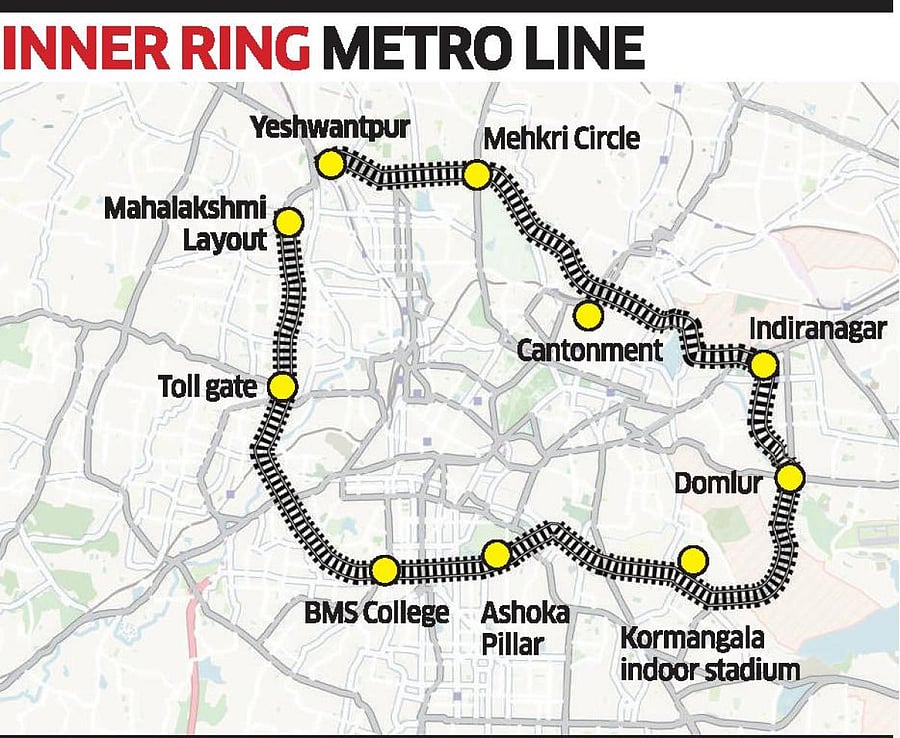A fully underground 34-km-long Inner Ring Metro (IRM) line, proposed by the Indian Institute of Science (IISc), can help trigger an overall 77% rise in Namma Metro’s ridership by 2030, reveals a study by the IISc transportation engineering lab. With this, the city’s total metro network will go up to 203 km.
Based on the lab’s input, the IISc had proposed the IRM corridor with a station at the institute, to the state chief secretary on March 23, 2019. The Bangalore Metro Rail Corporation Limited (BMRCL) had later asked the lab to conduct a demand assessment and evaluation of the corridor.
In their report, Dr Ashish Verma, Harsha Vajjarapu and Hemanthini Allirani note that metro’s daily ridership with the IRM in place will be 15.2 lakh. “With a further rise in the metro network by 34 km in addition to 169 km, the ridership increases by 77% when compared to Business As Usual (BAU) scenario.”
The IRM has been designed with 23 new metro stations and six interchanges, considering the completion of all other phases of the Namma Metro project. The IRM would serve as a link connecting the city’s all major commercial and educational hubs and help reduce congestion.
Embedded on the IRM corridor are stations at Yeshwantpur, Sandal Soap Factory, IISc, Mehkri Circle, Jayamahal Road, MEG Park, Halasuru, Indiranagar (inter-change), Doopanahalli, Domlur, Ejipura, Dairy Circle, Nimhans, Wilson Garden, South End Circle, Lalbagh, Srinagar and more.
The IISc study found that once the IMR is integrated to the overall metro network, the maximum Passenger Per Hour Per Direction (PPHPD) would go up to 48,425 between Whitefield and Ujjwal stations and 33,016 on the IMR between Hosahalli and Padarayanapura stations.
On the IMR’s Yeshwantpur–Sandal Soap Factory–IISc stretch alone, the PPHPD would be 24,477. Overall, the study had assumed that all the lines of IMR would have six-coach trains with capacity at 69,000 PPHPD.
Analysing the environmental benefits of the IMR, the study found that the total per capita CO² emissions would be reduced due to ridership shift to the metro. “An 11% decline in fuel consumption in IRM scenario is observed due to sizeable modal shift towards the electricity-based metro.”
Since all the currently planned phases of the metro would be completed and six-coach trains would be running with maximum capacity, the “IRM line can ply almost with 50% of its capacity in the year 2030 itself,” the study says.

